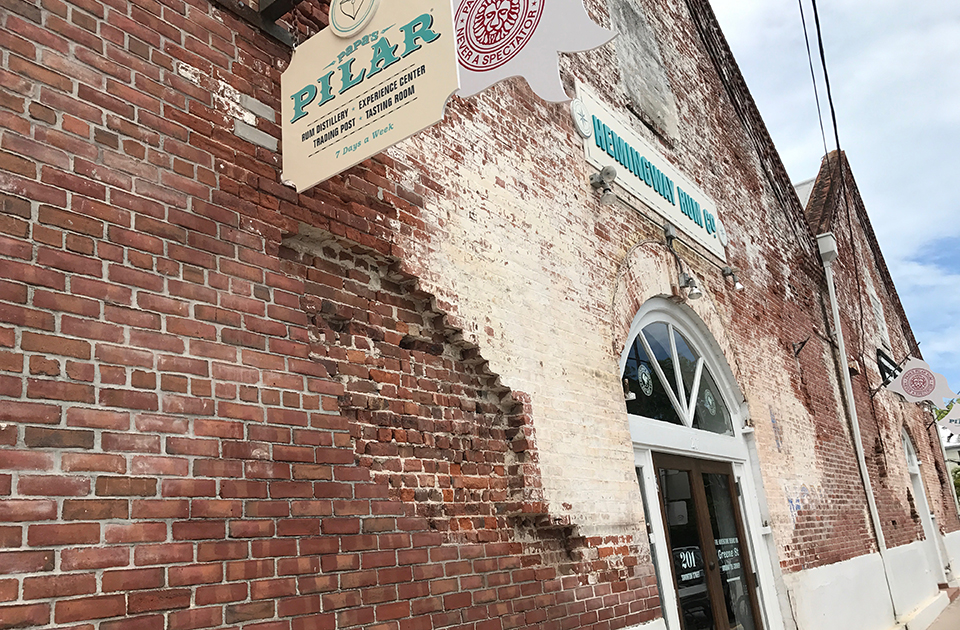BY ALEXANDER BRITELL
The sun burned and then the doors opened and the rum began to flow, in the way only rum can on a hot afternoon.
In an old grey building on Simonton Street in this island corner of America, the Hemingway Rum Company finally had found a home.
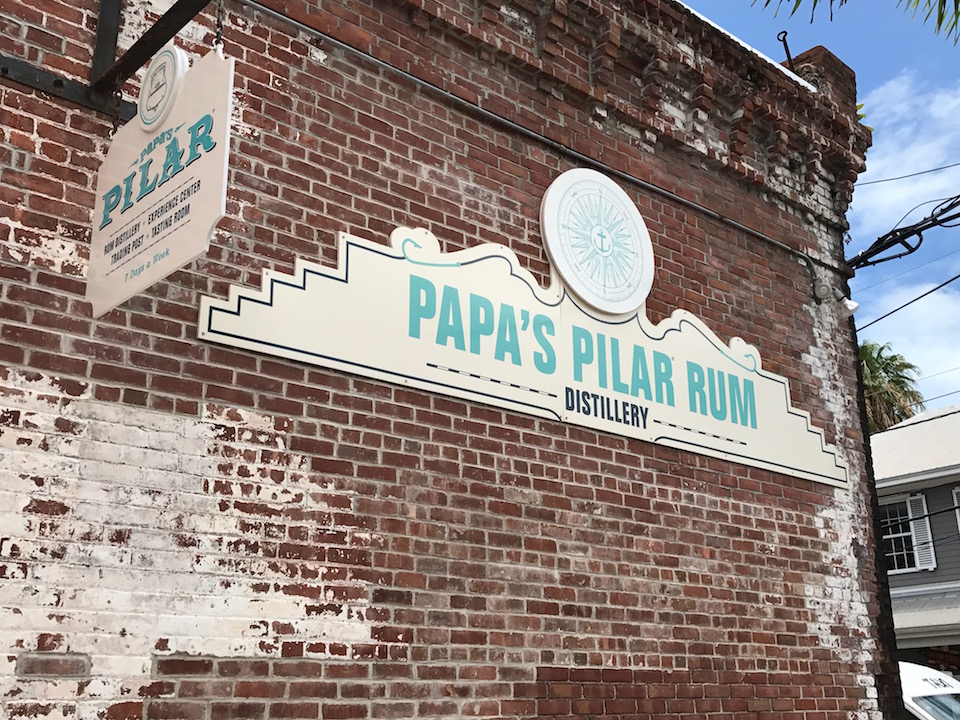
Four years after its birth, the increasingly popular Papa’s Pilar Rum has a flagship, set in an 1878 tobacco warehouse in Key West, Fla.
While the brand has been expertly blending (and finishing) rums largely from Florida, the Caribbean and Central America, the new Key West headquarters will make its first true distilled product, rum which will soon find its way into the bottles of what has become a serious player in the high-end boutique rum segment.
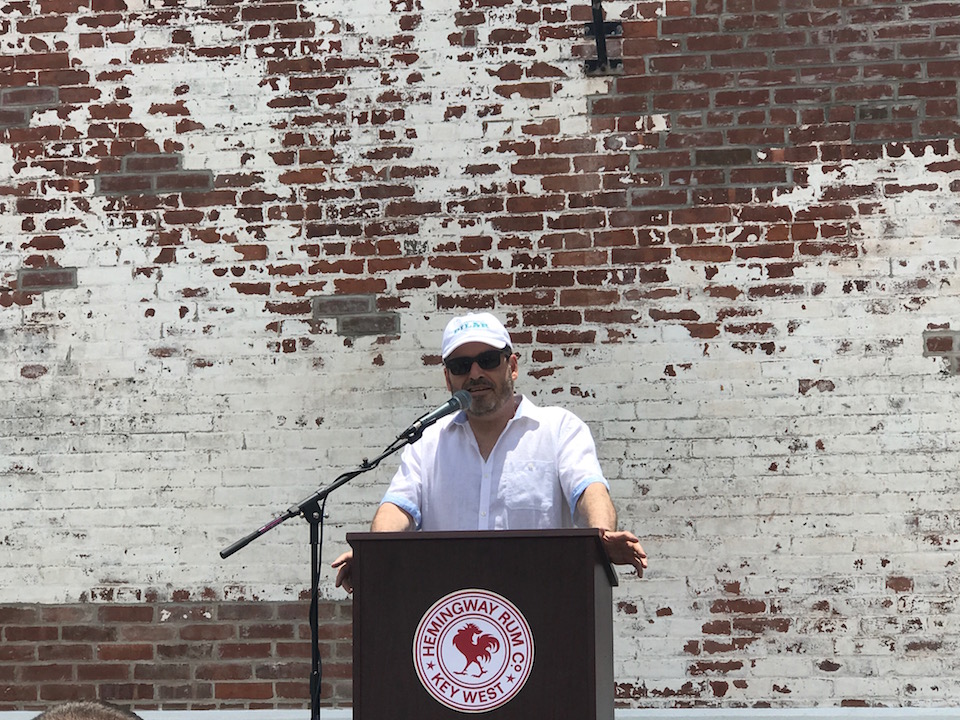
John Hemingway at the ribbon-cutting event.
And the Hemingway name is not puffery; the Hemingway Estate is actively behind the brand, with a not insignificant stake whose profits are channeled to causes that protect and conserve the oceans Ernest Hemingway loved so much.
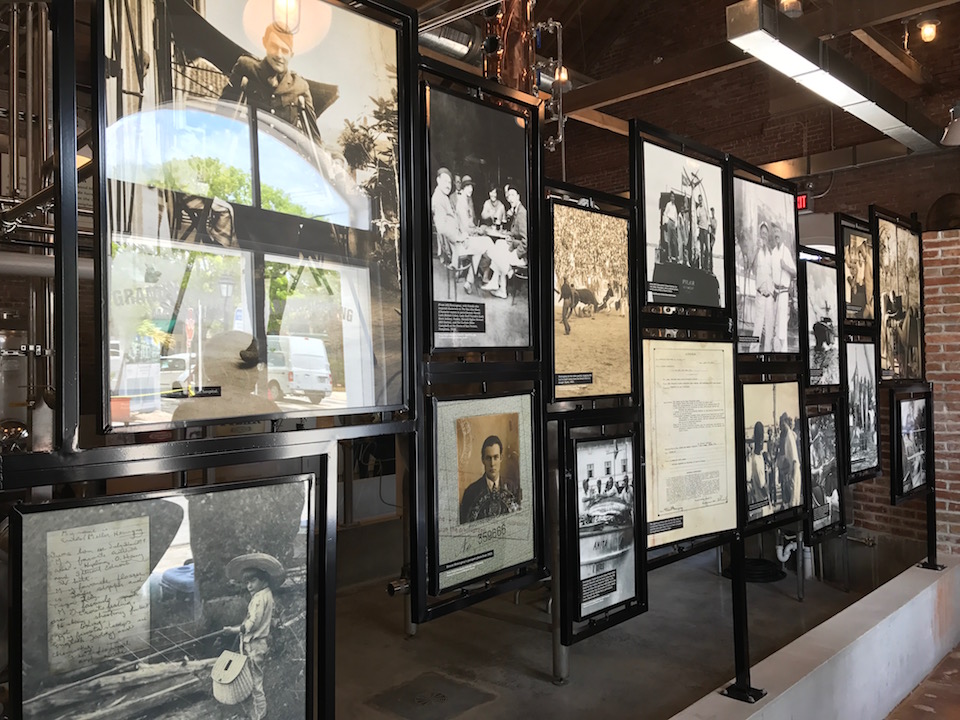
The distillery is as much a Hemingway museum as a rum center.
“I believe in this rum,” Hemingway’s grandson John said at a ribbon-cutting ceremony on Wednesday, joined by Key West Mayor Craig Cates and other boldfaced names including Captain “Wild” Bill Wichrowski, among others.
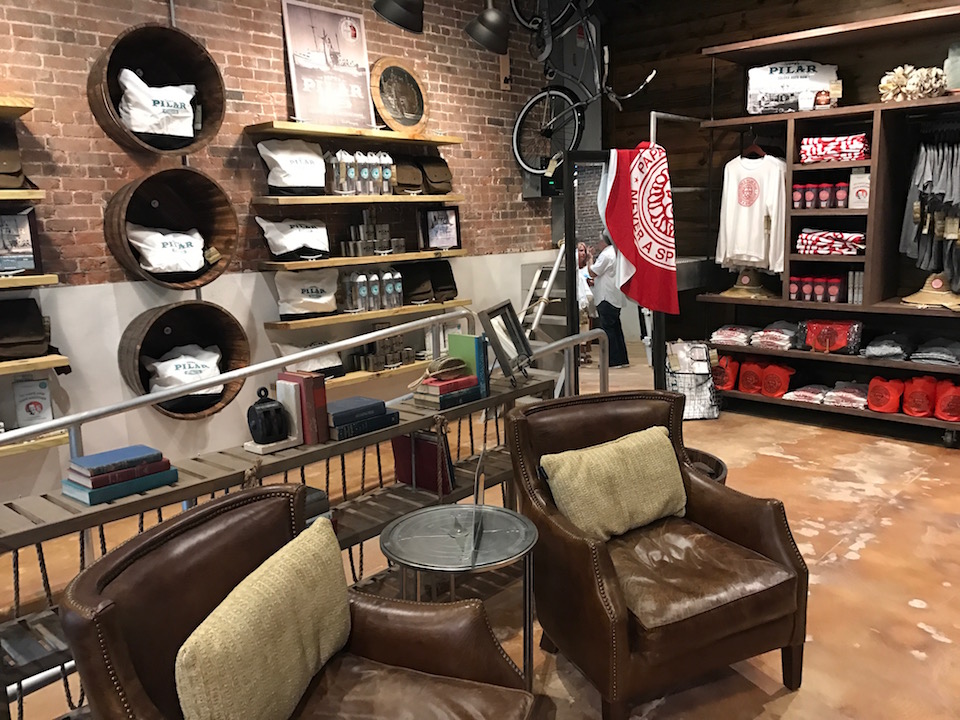
Of course, the Key West outpost for a rum heretofore (and still in part) produced in central Florida is no accident: this was where Hemingway first began living in 1931, spending long periods of time in the home (when he was not in Cuba) in the 1940s and 50s.
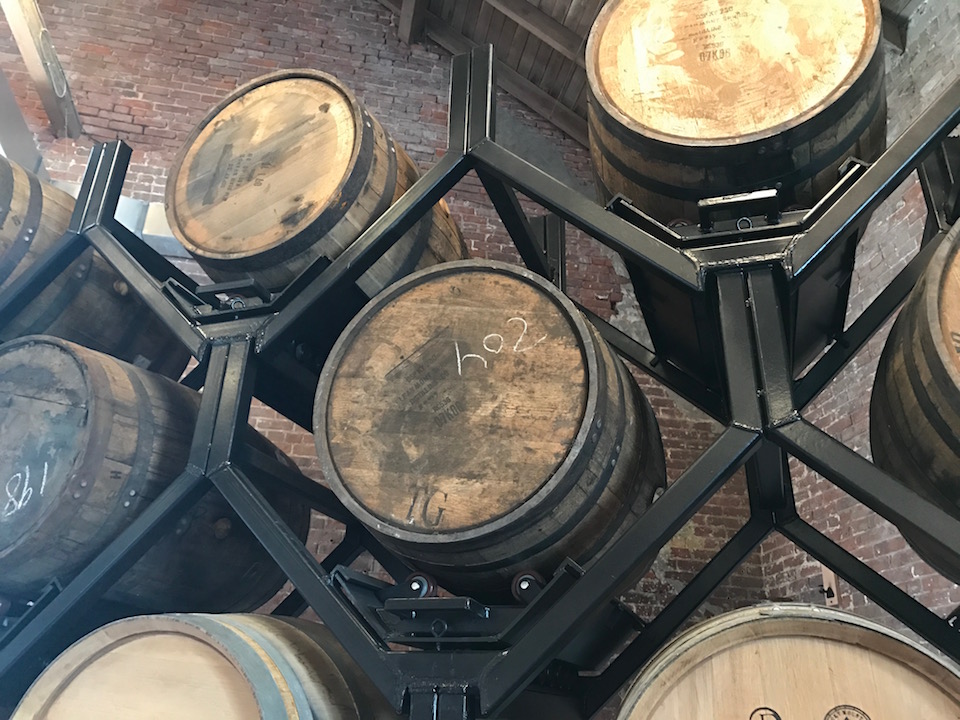
And now, once the final permitting hurdles are cleared, rum will soon be made at this active distillery (using Florida molasses); while it will naturally be a white rum to begin with, it will be included in the blend in varying proportions to preserve the flavor profile developed over the years, Grooms says.
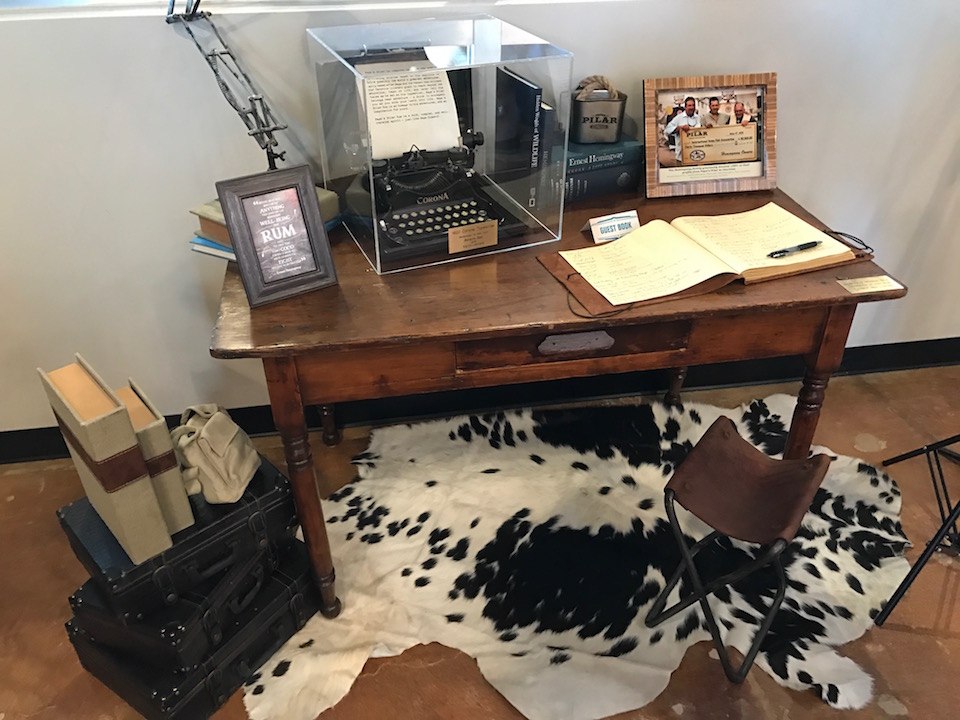
Papa’s Pilar has a taste that’s unique, thanks to a blend of rums from Florida, Barbados, the Dominican Republic and Panama (and other unnamed origins), aging in bourbon and port barrels and finishing in Oloroso Sherry barrels.
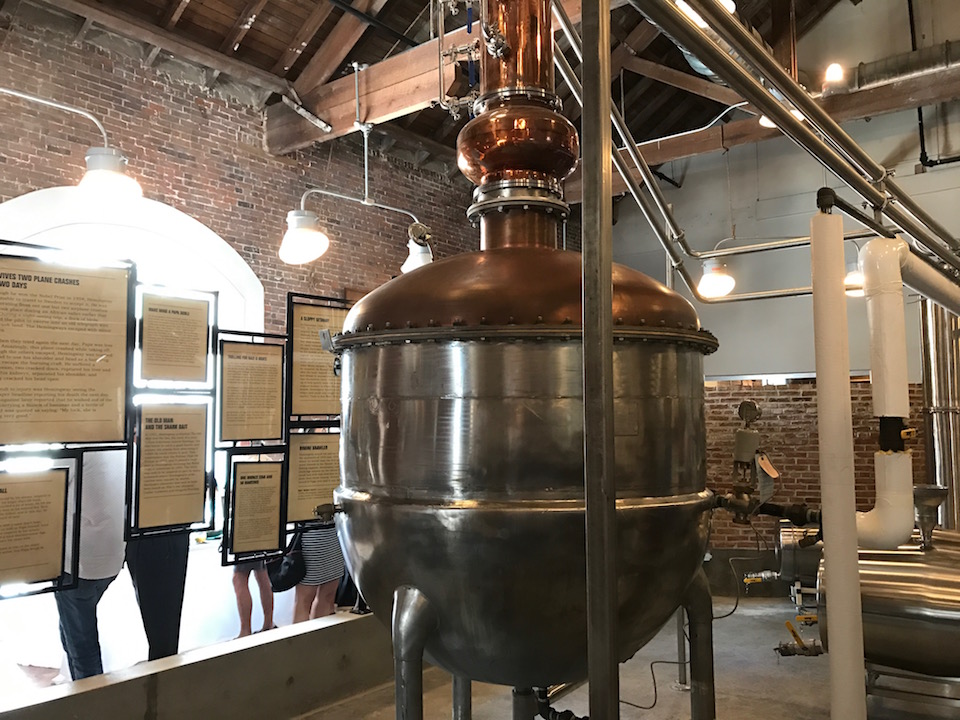
The modernized pot still.
It’s the “art and science of rum,” says distiller Carlton Grooms, pointing to the basic production of rum as the science and the intricate blending and finishing process as an art. The latter is true, a reason why the company has been able to take existing bulk rums and create something that has a unique flavor profile in the rum industry.
“Rum is American history in a glass,” Grooms says, underscoring a long-neglected part of American lore that was largely forgotten thanks to Prohibition, the scourge that closed so many vibrant rum distilleries in the United States.
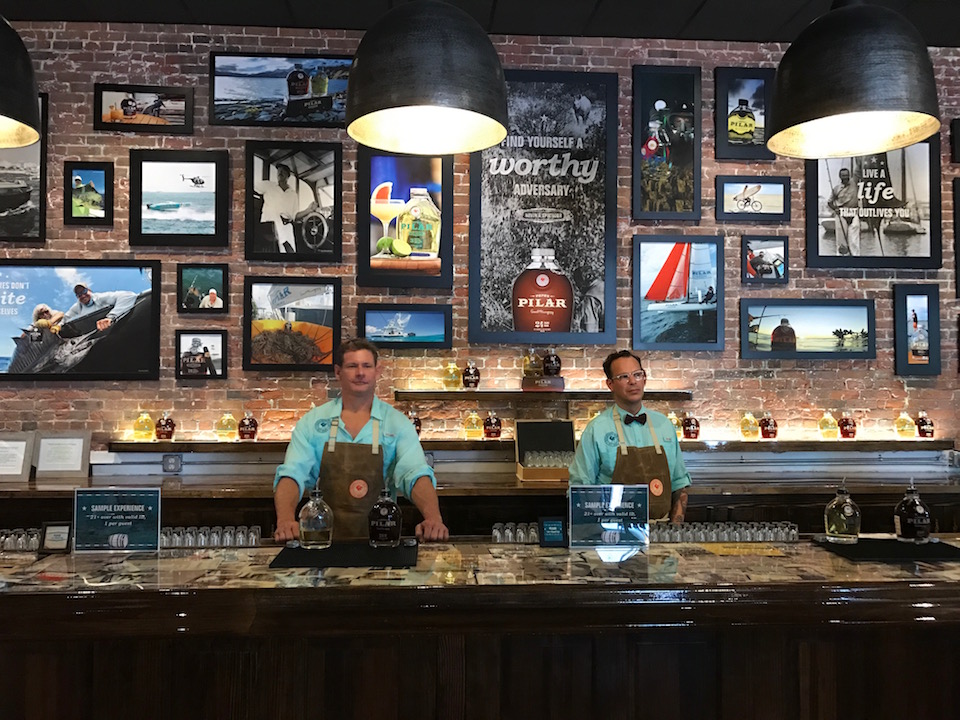
The tasting room.
The new Hemingway Rum Company headquarters is as nice of a rum company visitor experience as I’ve seen, with an impressive gift shop that rivals an Orvis and a beautifully constructed distillery-visitor center that is a wonderful introduction to rummaking, from the barrels to the proximity to the still.
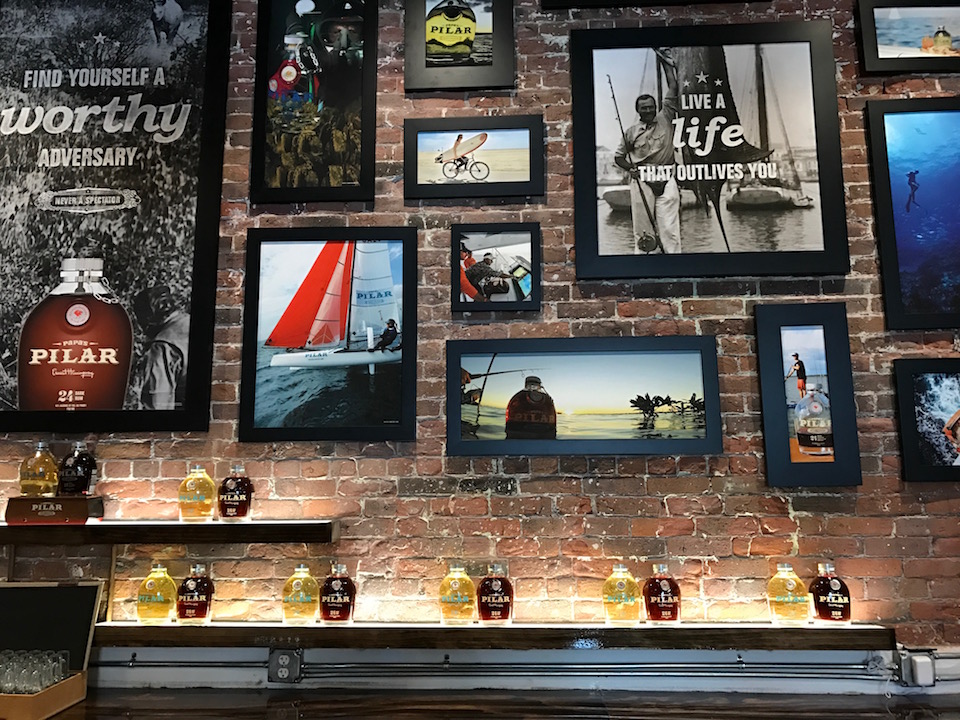
The Hemingway touches are well done, from one of the author’s actual desks to a rotating-photo gallery of historic shots.
At the end of the day, though, it’s a place to buy a very good rum, one that has been doing its part to help revive the image of the spirit.
Or, as John Hemingway colorfully (and accurately) said, “it’s effin good.”
— Alexander Britell
